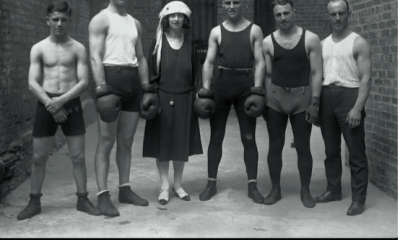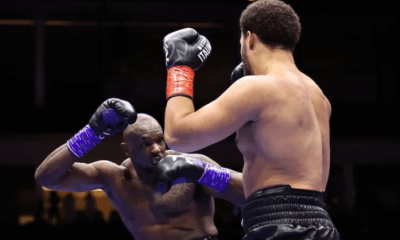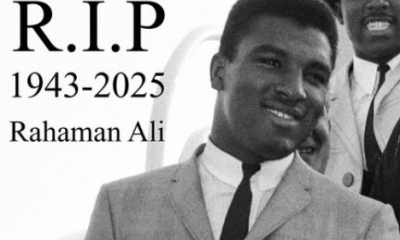Articles of 2007
Team Philippines: The Third Wave
Giambattista Vico, a renowned historian of the 17th century, probably knew nothing of professional prizefighting. But his theory of various civilizations and cultures going through similar cycles reflects the rise, fall and rise again of Filipino boxing.
The Italian historian Vico, who has a street named after him near the Vatican, wrote in his book the New Science that civilizations and cultures go through three similar stages whether they were the Turkish Empire, Roman Empire or British Empire.
In professional boxing, the Philippine Islands have sent great boxers to this country in the 1920s, the 1960s and now the 21st century with the advent of Manny Pacquiao breaking down the glass ceiling that kept that nation’s talented bunch from recognition.
Is it coincidence?
History repeats itself, according to Vico.
Today the Wild Card Gym in Hollywood serves as a launching pad for more than a dozen Filipino prizefighters eager to fling themselves at a chance for a world title and possibly wealth and recognition.
“These guys are hungry, hungry fighters,” said Eric Gomez, the matchmaker for Golden Boy Promotions who have numerous Filipino fighters under contract. “They all want to be like Manny Pacquiao.”
When the first large wave of Filipinos arrived in Los Angeles they brought their culture, values and willingness to fight in the prize ring during the Prohibition era. They loved to box.
“A lot of Filipinos were great fighters,” said Leonard Castillon, 92, who boxed in Los Angeles during the late 1920s. “Most of them lived near where the Union train station is today.”
Fighters like Pancho Villa (Francisco Guilledo), Speedy Dado (Diosdado Posadas), and Pablo Dano fought during the Roaring 20s and established a fan base that never waned. For years crowds in New York, Washington and California jammed arenas to watch fighters like Villa who captured the flyweight world championship in 1923 against the great Jimmy Wilde by knockout.
“I used to see Speedy Dado fight at the Olympic,” Castillon said. “The Filipino boxers were always very sharp dressers. He always had the best clothes and shiniest shoes.”
Villa died from a tooth infection at age 23. He was never beaten for the flyweight world title. Dado and Dano both fought for world titles unsuccessfully in the bantamweight and flyweight divisions.
Dado lost an eye because of injuries inflicted during a fight. Otherwise he might have still fought on after 148 pro fights. Dano fought 139 pro fights.
Second wave
Gabriel “Flash” Elorde led another batch of talented Filipino fighters to this country beginning in 1956. A world title fight against Sandy Saddler established Elorde’s fighting pedigree and led to his re-establishing Filipino fighters in this country.
In 1960 Elorde was finally given another world title opportunity and crashed through with a six knockdowns of then champion Harold Gomes to win by seventh round technical knockout. They fought again a year later. The fight lasted one round.
Elorde and several other talented Filipino boxers were part of a second wave from the island nation who crashed through the barrier of elite fighters.
Soon the nation comprised of more than 7,000 islands began sending more prizefighters to the United States. But it was barely a trickle as fighters like Luisito Espinosa, Jesus Salud and Gerry Penalosa fought their way to world titles but few others received an opportunity.
Penalosa recently fought Ponce de Leon for the WBO junior featherweight title and lost by a much-disputed decision. Now he’s facing WBO bantamweight titleholder Jhonny Gonzalez for that title.
The resurgence in Filipino boxing came following Pacquiao’s explosive win over South Africa’s Lehlo Ledwaba. He was a last-minute replacement and not considered a big threat despite holding the WBC flyweight title in 1998.
Manny mania
Pacquiao’s destruction of Ledwaba was followed by a foul-infested title defense against the now deceased Agapito Sanchez. But against other competition it was consecutive annihilation of five opponents by knockout. One of those was the great Mexican fighter Marco Antonio Barrera.
“I’ve been to the gyms in the Philippines and they have so many great fighters over there,” said Gomez. “They’re just like the Mexican fighters they have a lot of pride and they just won’t quit.”
The win over Barrera perked the interest of Mexican fight fans unaccustomed to seeing their “Murderers Row” of fighters lose to a Filipino boxer. But within three years “Pacman” as he is called, gobbled up Barrera, Oscar Larios, Erik Morales twice (and one loss) and a draw with Juan Manuel Marquez.
Now stadiums and arenas everywhere are packed with fans that are delirious about their beloved Pacquiao. It’s similar to the 1980s in baseball when Fernando Valenzuela’s success led to Fernandomania at Dodger Stadium.
Mexico vs. Philippines
The success of Pacquiao has led to numerous Filipino fighters signing fight contracts with promoters trying to find the next golden goose. In a couple of weeks a tournament is taking place that pits two similar fighting cultures against each other in Sacramento.
“This is a very exciting fight (card),” said Filipino boxing trainer Ala Villamor, a former title contender whose last fight was against Mexico’s Ricardo “Finito” Lopez in 1996. “Mexican fighter and Filipino fighters make very exciting fights.”
Villamor expects a hefty crowd at the Arco Arena on Aug. 11 when the two boxing crazy countries pit many of their best fighters against each other.
“Oh I expect a lot of Filipino fans to come,” said Villamor, who trains more than 50 fighters in his native country including Rey “Boom, Boom” Bautista. “There are a lot of Filipinos in the San Francisco and Sacramento area.”
Fans don’t have to wait until Aug. 11 to see Mexican fighters matched against Filipino fighters. This weekend on Aug. 4, in Illinois, Rodel Mayol attempts to take Mexican Ulises Solis IBF junior flyweight title. On the same card Bernabe Concepcion collides with another Mexican fighter Gabriel Elizondo for the NABF junior featherweight title.
Next week comes the collision of two boxing worlds when Team Mexico faces Team Philippines. Bautista, AJ “Bazooka” Banal, Penalosa, Z Gorres take on the Mexican army headed by Daniel Ponce De Leon and Jhonny Gonzalez. It should be one of the most competitive fight cards seen this year.
The Filipinos are on the move once more and history is repeating itself.
Look for Part 2 next week.
-

 Featured Articles4 weeks ago
Featured Articles4 weeks agoThe Hauser Report: Zayas-Garcia, Pacquiao, Usyk, and the NYSAC
-

 Featured Articles3 weeks ago
Featured Articles3 weeks agoOscar Duarte and Regis Prograis Prevail on an Action-Packed Fight Card in Chicago
-

 Featured Articles2 weeks ago
Featured Articles2 weeks agoThe Hauser Report: Cinematic and Literary Notes
-

 Book Review2 weeks ago
Book Review2 weeks agoMark Kriegel’s New Book About Mike Tyson is a Must-Read
-

 Featured Articles3 days ago
Featured Articles3 days agoThe Hauser Report: Debunking Two Myths and Other Notes
-

 Featured Articles4 weeks ago
Featured Articles4 weeks agoRemembering Dwight Muhammad Qawi (1953-2025) and his Triumphant Return to Prison
-

 Featured Articles1 week ago
Featured Articles1 week agoMoses Itauma Continues his Rapid Rise; Steamrolls Dillian Whyte in Riyadh
-

 Featured Articles3 weeks ago
Featured Articles3 weeks agoRahaman Ali (1943-2025)















